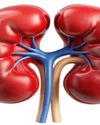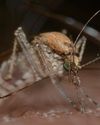Prøve GULL - Gratis
Development of Food grade Edible Growth Media Using Food processing by-products: Production and Delivery of Probiotics
Scientific India
|May - June 2021
Vegetarian probiotic foods by meaning must be free from all animal-derived ingredients. This not only includes the product ingredients but the probiotic inoculum as well.

Probiotic starter cultures are usually grown and stored in media containing milk or meat-derived ingredients. The presence of such ingredients makes the probiotic cell concentrates inappropriate for use in vegetarian products and thus creates the need for a growth medium free from animal-derived ingredients. Conventional nutrient media comprises of several non-edible components which are not suitable to consume when the organism is ready to intake as probiotics growing in chemical media (Lactobacillus grown in MRS media).
A growth medium is a solid, liquid or semi-solid intended to support the growth of microorganisms. Growth medium contains several elements which microorganisms needed for growth and are not selective, therefore they are uses for the universal cultivation and maintenance of bacteria kept in laboratory culture collections. An undefined medium (also known as a basal) contains a carbon source such as glucose, various salts, a source of amino acids and nitrogen like beef and yeast extract. Growth media offers minimum cell injury, appropriate for screening and maximum viability of cells.
The cost of media is also an important concern. Commercially available media are costly and non-consumable. Peptones are the most extensively nitrogen source for majority of microbial media. Some are prepared by cooking milk or meat products (beef, pork) in acid, but most are made by incubating milk or meat with trypsin, pepsin, or other proteolytic enzymes to digest the protein to a mixture of amino acids, peptides, and polypeptides. These microbial growth media are exceedingly uses in microbiological research. These media are now extensively used in fermented food industries.
Denne historien er fra May - June 2021-utgaven av Scientific India.
Abonner på Magzter GOLD for å få tilgang til tusenvis av kuraterte premiumhistorier og over 9000 magasiner og aviser.
Allerede abonnent? Logg på
FLERE HISTORIER FRA Scientific India
Scientific India
Japanese physicists were the first to measure the most tolerant entanglement state, the W state
There are many unusual things that happen in the world of quantum physics.
3 mins
September - October 2025

Scientific India
The Fifth Force: Could It Unlock the Secret of Dark Matter?
What if the universe is powered by a force we've never seen before? For centuries, science has explained nature with four fundamental forces.
3 mins
September - October 2025

Scientific India
A flu test you can chew
As flu season nears in the northern hemisphere, scientists are exploring a surprising new way to detect infection: through taste.
1 mins
September - October 2025

Scientific India
Lab-Grown Kidney Brings Artificial Organ Dream Closer to Reality
In a major leap toward bioengineered organ replacement, scientists have successfully grown human kidney 'assembloids' in the laboratory that mimic key structural and functional features of natural kidneys.
1 min
September - October 2025

Scientific India
Your pumpkin might be hiding a toxic secret
Pumpkins, squash, zucchini, and other members of the gourd family have a surprising trait: they can take up pollutants from the soil and store them in their edible parts.
1 mins
September - October 2025

Scientific India
2025 Nobel Prize in Physics Reveals Quantum Secrets in Superconducting Circuits
The 2025 Nobel Prize in Physics has been awarded to John Clarke, Michel H. Devoret, and John M. Martinis for their pioneering experiments that brought quantum mechanics from the invisible atomic world to the macroscopic scale a system large enough to hold in your hand.
1 mins
September - October 2025

Scientific India
Genomic Evidence Redefines the Evolutionary Age of Mosquitoes
A new genetic analysis has shaken up what we thought we knew about one of humanity's most notorious pests the mosquito.
1 min
September - October 2025

Scientific India
Nobel Prize in Chemistry 2025: Building Molecular Architectures with Room to Breathe
In a scientific breakthrough that bridges molecular design with planetary-scale problems, the 2025 Nobel Prize in Chemistry has been awarded to Susumu Kitagawa, Richard Robson, and Omar Yaghi.
1 mins
September - October 2025

Scientific India
Guardians of Immunity: Nobel Prize 2025 Honors Discoveries that Keep the Immune System in Check
The 2025 Nobel Prize in Physiology or Medicine has been awarded to Mary E. Brunkow, Fred Ramsdell, and Shimon Sakaguchi for their groundbreaking discoveries in the field of peripheral immune tolerance a crucial mechanism that prevents the body's immune system from turning against itself.
1 mins
September - October 2025

Scientific India
'Is cold nuclear fusion feasible?
In early May 1989, two chemists from the University of Utah, Pons and Fleischmann, arrived in Washington, U.S.A. The aim is to present their findings to members of the US Congress.
3 mins
September - October 2025
Translate
Change font size
